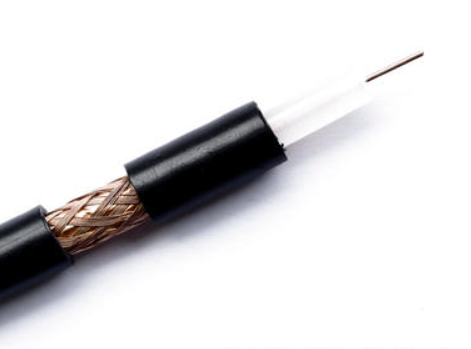
What Are the Typical Applications of RG59 Cable?
RG59 cable is a type of coaxial cable that is commonly used in various applications, particularly in the field of video transmission. It has been widely adopted due to its excellent performance and versatility.
In this article, we will explore the characteristics, applications, advantages, and limitations of RG59 cable.
In this article, we will explore the characteristics, applications, advantages, and limitations of RG59 cable.
What is RG59 Cable?
RG59 cable, also known as Radio Guide 59, is a type of coaxial cable that consists of a center conductor, dielectric insulator, shielding, and an outer jacket.
The center conductor is typically made of copper or copper-clad steel, surrounded by a layer of insulating material such as foam or solid polyethylene.
The shielding is usually composed of multiple layers of aluminum foil and a woven or braided copper wire mesh. The outer jacket is made of PVC or similar materials to provide protection and durability.
What Are the Typical Applications of RG59 Cable?
RG59 cable is primarily used for video applications, especially in the transmission of analog and digital signals. It is commonly utilized in the following scenarios:
CCTV Systems
RG59 cable is widely employed in closed-circuit television (CCTV) installations to connect cameras to monitors or recording devices. It allows for the reliable transmission of video signals over long distances without significant signal degradation.
Broadcast and Television
RG59 cable is frequently used in professional video production and broadcasting environments. It enables the transmission of high-quality video signals from cameras to production equipment, control rooms, or transmission facilities.
Home Theater Systems
RG59 cable can be utilized in home theater setups to connect video sources, such as DVD players or gaming consoles, to televisions or projectors. It ensures a stable and clear video signal transfer, enhancing the overall viewing experience.
What Are the Advantages of RG59 Cable?
RG59 cable offers several advantages that contribute to its widespread use in video transmission applications:
Excellent Signal Quality
RG59 cable is designed to provide exceptional signal quality, ensuring minimal signal loss and maintaining high video resolution. It offers low attenuation, which means the signal can travel longer distances without significant degradation.
Wide Bandwidth
RG59 cable has a wide frequency range, allowing it to handle various video formats, including standard definition (SD), high definition (HD), and even some ultra-high-definition (UHD) signals.
Cost-Effective
RG59 cable is generally more affordable compared to other coaxial cables with similar performance characteristics. This makes it a cost-effective choice for many video transmission applications, especially for shorter to medium-length cable runs.
Is RG59 Cable Suitable for Outdoor Installations?
RG59 cable is typically not recommended for outdoor installations where it is exposed to harsh environmental conditions.
While it can withstand moderate temperature variations and indoor environments, it is not specifically designed to resist moisture, UV radiation, or extreme temperatures.
For outdoor applications, it is advisable to use cables specifically engineered for such environments, such as RG6 or RG11 cables.
What is the Maximum Distance for RG59 Cable?
The maximum distance for RG59 cable depends on various factors, including the signal type, cable quality, and equipment used.
As a general guideline, RG59 cable can reliably transmit video signals up to approximately 200 to 300 meters (656 to 984 feet) without requiring signal amplification or equalization.
However, for longer distances, it is advisable to use signal boosters or consider alternative cable options with lower attenuation, such as RG6 or RG11.
Conclusion
RG59 cable is a widely used coaxial cable for video transmission applications. It provides excellent signal quality, wide bandwidth, and cost-effectiveness.
While it is not recommended for outdoor installations, it excels in indoor settings such as CCTV systems, broadcast environments, and home theater setups.
While it is not recommended for outdoor installations, it excels in indoor settings such as CCTV systems, broadcast environments, and home theater setups.







Leave a comment